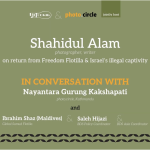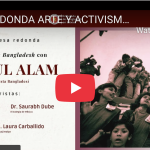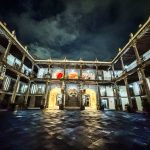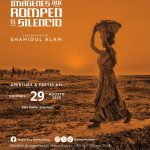by rahnuma ahmed
Official versions conflict about why Romel Chakma – a 20-year old HSC examinee and student leader of the Pahari Chatra Parishad – was picked up by the army, whether he was transferred from army to police custody while in Naniachar, whether his admission to, and 2-weeklong treatment at, the Chittagong Medical College and Hospital (CMCH), occurred under police custody, and lastly, whether the Naniachar police station’s officer-in-charge (OC) was physically present when Romel’s body was burnt (not cremated, for his body was not handed over to his family), a few hundred yards away from his home in Purba Hatimara village, Naniachar.
Romel was not ill, nor was he suffering from any kind of injury when he was picked up. I have not come across any such media reports, nor does Romel’s father Kanti Chakma, in his letter to the National Human Rights Commission (NHRC, dated April 6, 2017), make any such mention. One can therefore assume that he was reasonably fit and healthy (beside the stresses and strains of appearing for his exams), when he was picked up.
No, he was not born with any visual disability, replied his mother Alo Devi Chakma. He lost his right eye in a firecracker incident during Chaitra Shonkranti celebrations (eve of pahari and Bengali new year), several years ago. He was 11, perhaps 12. Her husband stood beside her and nodded his head gently.
Romel had no exam on the 5th of April. It was the weekly market day and he went to the haat to buy groceries. He was living in a rented accommodation in Naniachar town for the duration of his HSC exams, his younger brother, studying to be a Buddhist monk, also lived with him. The market is next to the Naniachar zone headquarters.
All hell broke loose after he died on April 19.
News of his having been picked up, and his father’s letter to the NHRC, had only been reported in an online news portal (chtnews.com) which focuses on news about the Chittagong Hill Tracts (CHT). Several other news portals, similar in their CHT-centredness exist but the similarity ends there. Their reliance on government and army handouts is very visible.
National dailies and online news portals began reporting on Romel’s death, and on the road and waterway blockades, market boycotts, sit-in strikes in the CHT, 2-3 days later. Soon followed by reports of protests outside the CHT, largely human chains and rallies organised by students of public universities, demanding a judicial enquiry, punishment of the killers, and the end of shena shashon (army rule) in the CHT.
It was broad daylight when Romel was picked up by the army (10 in the morning), Kanti Chakma had also mentioned it in his letter to the NHRC, therefore, it was only reasonable for reporters to approach the army for information.
In response to queries, Lt Col Mohammad Rashidul Hasan, director of ISPR, said, ‘He was picked up by members of the army on April 5 for having torched a truck and looted buses, he was handed over to the police on the same day. He was in police custody for the next 14 days, undergoing treatment at the Chittagong Medical College and Hospital. He died on April 19 while undergoing treatment. The allegation that he died as a result of army torture is inaccurate and false’ (Deutsche Welle, April 22, 2017).
The OC of Naniachar thana Abdul Latif did not agree, ‘We did not detain Romel, nor did we admit him to the hospital. We went to Chittagong on the basis of information provided by Panchlaish thana, we received the body after after the surat-e-hal [inquest] and postmortem had been conducted. The Chittagong Medical College and Hospital falls within the jurisdiction of Panchlaish thana. But since Romel Chakma is from Naniachar, we had to bring his body back to Naniachar.’ (Deutsche Welle, April 22, 2017).
The reporter of an English daily was persistent. The OC’s denial of ‘custody transfer’ led him back to the ISPR director. He was met with curt response, ‘Oh, is that so?’ (Daily Star, April 23, 2017).
Other discrepancies have emerged. In response to further media queries, the OC has said, ‘They brought a patient to us on the night of the 5th at 12:30. One can only call him a patient. The duty officer said, go and get him treated first. You can pursue legal measures only after he has been treated. After that they took him to the upazilla health complex and got him admitted saying he had been injured in a road accident. He was referred to the Chittagong [Medical College and Hospital] that very night.’ He added, ‘There is no case against him at the thana. They did not even try to transfer custody. The patient was visibly ill, the duty officer saw that. He told them to get him treated’ (BBC Bangla, April 23, 2017).

The OC is right. New Age investigations reveal that Romel Chakma was admitted to the CMCH on the morning of April 6 by ‘Army from Naniachar’ (see photograph of the logbook maintained at the police checkpost at the entrance to the CMCH). In the entries made under ‘Incident’ (left page) and ‘Details of the incident’ (right), several words have been crossed out. I choose not to speculate.
A national daily contributed to this flurry of statements and misstatements by publishing a news item titled, ‘Attempts to destroy peace in the Hills over the death of an armed member of the UPDF.’ It said, the Joint Forces apprehended an armed terrorist named Romel Chakma alias Shupen on receiving secret information. Romel was a member of the UPDF (the PCP, by the way, is closely aligned to the UPDF, the United Peoples Democratic Front), he had taken part in setting fire to a truck in Betchari on January 23, 2017; the security forces had learnt of his having taken part in other terrorist activities earlier. They had tried to capture him and finally succeeded on April 5. When Romel became aware of the presence of the Joint Forces, he tried to escape and hit a CNG scooter. Because of his injuries he was admitted to the upazilla health complex, and later transferred to the CMCH, where he died on April 19 (‘UPDF-er ek shoshostro shodosshoke kendro kore paharke abar oshanto korar cheshta,’ Kaler Kantho, April 23, 2017). None of the information that has come out since, lends any credibility to the claims made in the news item.
No further statements have been made by the director, ISPR, or by the Naniachar police.
Protests have been met with an army crackdown: increased checkposts and checks, banners have been snatched away, posters torn off, paharis going to attend a memorial meeting for Romel were turned away, a Dhaka team on the way to Naniachar was turned back, another was prevented from entering Lama in Bandarban, student leader Jewel Chakma (president of Panchari unit PCP) has been arrested and remanded. Military rule in the CHT is racialised, only paharis are stopped, prevented, persecuted and harassed, while Bengalis are allowed to go their way peacefully.
Studies exclusively devoted to the CHT, notes Brigadier Syed Muhammad Ibrahim (infantry brigade commander, Rangamati and Khagrachari, 1987-1989), focus on ‘aspects of national integration, ethnic conflict, etc.’ but not on the phenomenon of insurgency (‘Insurgency and Counterinsurgency: The Bangladesh Experience in Regional Perspective ? The Chittagong Hill Tracts’, U.S. Army War College, 1990).
I agree, but only partly. We should indeed turn our attention to insurgency, but that is only half the story. To understand why peace evades the Hills after nearly two decades of surrender, we need to examine counterinsurgency as well, in order to understand what went wrong where.
Published in New Age, May 15, 2017





Leave a Reply
You must be logged in to post a comment.